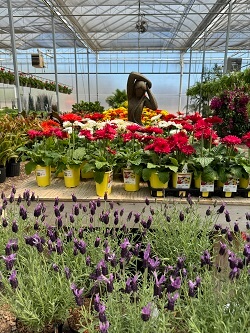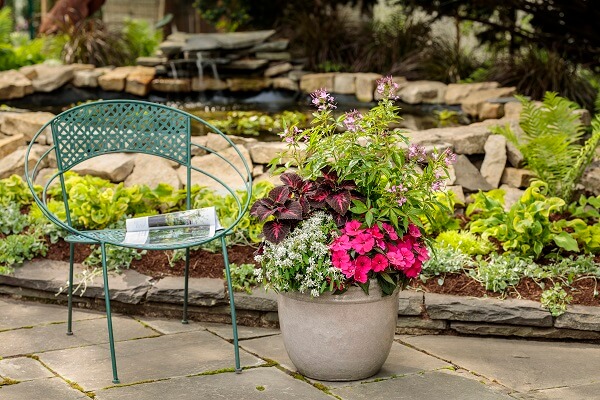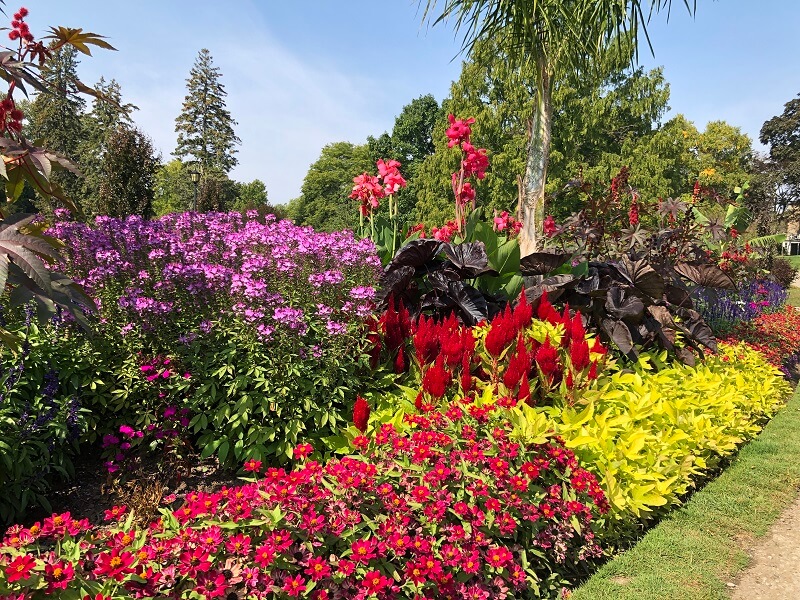In the world of gardening, few things rival the sheer vibrancy and energy brought forth by sun-loving annual plants. These botanical gems not only thrive under the warm embrace of sunlight but also infuse our outdoor spaces with an unparalleled burst of color and vitality. You may have seen our ads that claim ‘Plants. The life of outdoor living’ and when it comes to sun-loving annuals plants, we could add to our statement; ‘The life of VIBRANT outdoor living!’
Sun-loving annuals are revered for their ability to flourish in bright, sunny conditions, making them ideal candidates for gardens bathed in natural light. Unlike their perennial counterparts, which endure year after year, annual plants complete their life cycle within a single growing season. While this may seem like a fleeting presence, it offers unique advantages for gardeners seeking versatility and variety in their outdoor spaces. Imagine the work that each of these plants does in just one season; develop roots, grow leaves, then produce an abundance of buds and blooms to continue all the way through to the first frost of autumn!
One of the primary benefits of sun-loving annuals is their prolific blooming potential. These plants are adept at producing an abundance of flowers throughout the growing season, ensuring a continuous spectacle of color and fragrance in your garden. Whether you’re cultivating a vibrant floral display or seeking to attract pollinators, sun-loving annuals offer a reliable source of nectar and pollen for bees, butterflies, and other beneficial insects.
Sun-lov ing annuals are prized for their adaptability and ease of cultivation. With a diverse array of species and cultivars to choose from, gardeners of all skill levels can find suitable options to suit their preferences and environmental conditions. From drought-tolerant succulents to heat-loving tropicals, the versatility of sun-loving annuals knows no bounds, allowing for endless experimentation and creative expression in garden design. This genre of plants allows gardeners to push their artistic license season after season, playing with colour combinations and textures. Their seasonality makes it easy to change up the feel of your plantings; not in love with this year’s colour combination? That’s ok! Make notes and revise the colour scheme for next year.
ing annuals are prized for their adaptability and ease of cultivation. With a diverse array of species and cultivars to choose from, gardeners of all skill levels can find suitable options to suit their preferences and environmental conditions. From drought-tolerant succulents to heat-loving tropicals, the versatility of sun-loving annuals knows no bounds, allowing for endless experimentation and creative expression in garden design. This genre of plants allows gardeners to push their artistic license season after season, playing with colour combinations and textures. Their seasonality makes it easy to change up the feel of your plantings; not in love with this year’s colour combination? That’s ok! Make notes and revise the colour scheme for next year.
Growing Tips for Sun-Loving Annuals
While sun-loving annuals are known for their resilience and vigor, proper care and cultivation are essential to maximize their growth and blooming potential. Here are some tried-and-tested tips for success:
- Location, Location, Location: Sun-loving annuals thrive in full sunlight, so be sure to select a planting site that receives at least six to eight hours of direct sunlight per day. Avoid areas with dense shade or competition from nearby trees and shrubs, as this can hinder their growth and flowering.
- Soil Preparation: Prior to planting, prepare the soil by incorporating organic matter such as compost or aged manure to improve drainage and fertility. Sun-loving annuals prefer well-drained soil with a slightly acidic to neutral pH level.
- Watering: While sun-loving annuals are resilient to drought conditions, they still require regular watering to thrive. Water deeply and evenly, allowing the soil to dry out slightly between watering sessions to prevent root rot and other moisture-related issues.
- Fertilization: To promote healthy growth and flowering, fertilize sun-loving annuals regularly with a balanced, water-soluble fertilizer formulated for flowering plants. If your preference is ‘once and done’, use a slow release granular fertilizer, but be prepared to supplement with water-soluble if blooming slows. Follow the manufacturer’s instructions for application rates and frequency, and avoid over-fertilizing, as this can lead to excessive foliage growth at the expense of flowers.
- Deadheading and Pruning: Remove spent flowers (deadheading) regularly to encourage continuous blooming and prevent seed formation. Additionally, prune back leggy or overgrown stems to maintain a compact, bushy habit and promote new growth.
- Pest and Disease Management: Monitor sun-loving annuals for signs of pests such as aphids, whiteflies, and spider mites, as well as common fungal diseases like powdery mildew and botrytis. Employ integrated pest management techniques, such as hand-picking pests, using insecticidal soap, and practicing good sanitation to minimize the risk of infestation and disease.
 Creative Ways to Incorporate Sun-Loving Annuals: Let’s explore some creative ways to incorporate sun-loving annuals into your garden landscape.
Creative Ways to Incorporate Sun-Loving Annuals: Let’s explore some creative ways to incorporate sun-loving annuals into your garden landscape.
Container Gardens: Sun-loving annuals are perfect for container gardening, allowing you to create portable displays of color and texture on patios, balconies, and decks. Choose a variety of plant sizes, shapes, and colors to create visual interest, and experiment with different combinations of annuals, perennials, and foliage plants for added drama.Mixed Borders: Integrate sun-loving annuals into mixed borders alongside perennials, shrubs, and ornamental grasses to create dynamic, ever-changing displays throughout the growing season. Choose complementary colors and textures to achieve a harmonious balance, and stagger plant heights for added dimension and visual appeal.
Cutting Gardens: Cultivate a dedicated cutting garden filled with sun-loving annuals for a continuous supply of fresh blooms for floral arrangements and bouquets. Select varieties with long stems and sturdy foliage, such as zinnias, cosmos, and snapdragons, and harvest flowers regularly to encourage branching and new growth.
Edible Landscaping: Explore the culinary potential of sun-loving annuals by incorporating edible varieties such as nasturtiums, calendula, and borage into your garden landscape. Not only do these plants provide a feast for the eyes with their vibrant blooms, but they also offer a flavorful addition to salads, desserts, and herbal teas.
Vertical Gardens: Take your gardening to new heights by creating vertical gardens using trellises, arbors, and hanging baskets to showcase sun-loving annuals in innovative ways. Train vining plants such as morning glories, climbing roses, and sweet peas to ascend trellises and arbors, while cascading varieties like trailing petunias and ivy geraniums lend a touch of elegance to hanging baskets and wall-mounted planters. Sun-loving annual plants are invaluable assets to any garden landscape, offering a kaleidoscope of color, fragrance, and vitality throughout the growing season. By harnessing their radiant energy and embracing their versatile nature, gardeners can create breathtaking displays that captivate the senses and nourish the soul. Whether you’re a seasoned enthusiast or a novice gardener, let the brilliance of sun-loving annuals illuminate your outdoor spaces and inspire a lifelong passion for horticulture.
Sun-loving annual plants are invaluable assets to any garden landscape, offering a kaleidoscope of color, fragrance, and vitality throughout the growing season. By harnessing their radiant energy and embracing their versatile nature, gardeners can create breathtaking displays that captivate the senses and nourish the soul. Whether you’re a seasoned enthusiast or a novice gardener, let the brilliance of sun-loving annuals illuminate your outdoor spaces and inspire a lifelong passion for horticulture.
For a list of sun-loving annuals plants, download our Root Wisdom Information Sheet HERE.



 infections, ensuring that your plants remain healthy and disease-free.
infections, ensuring that your plants remain healthy and disease-free.

